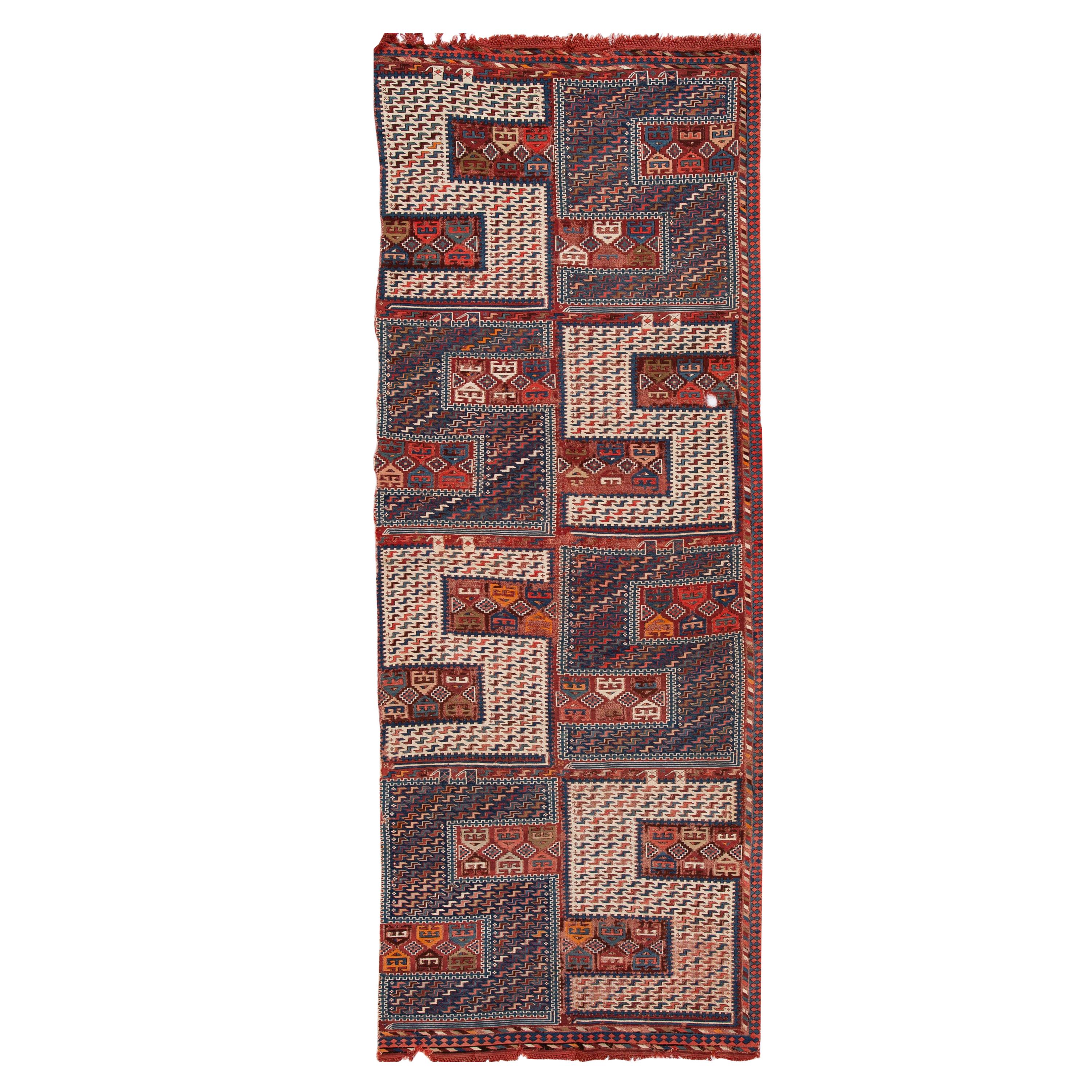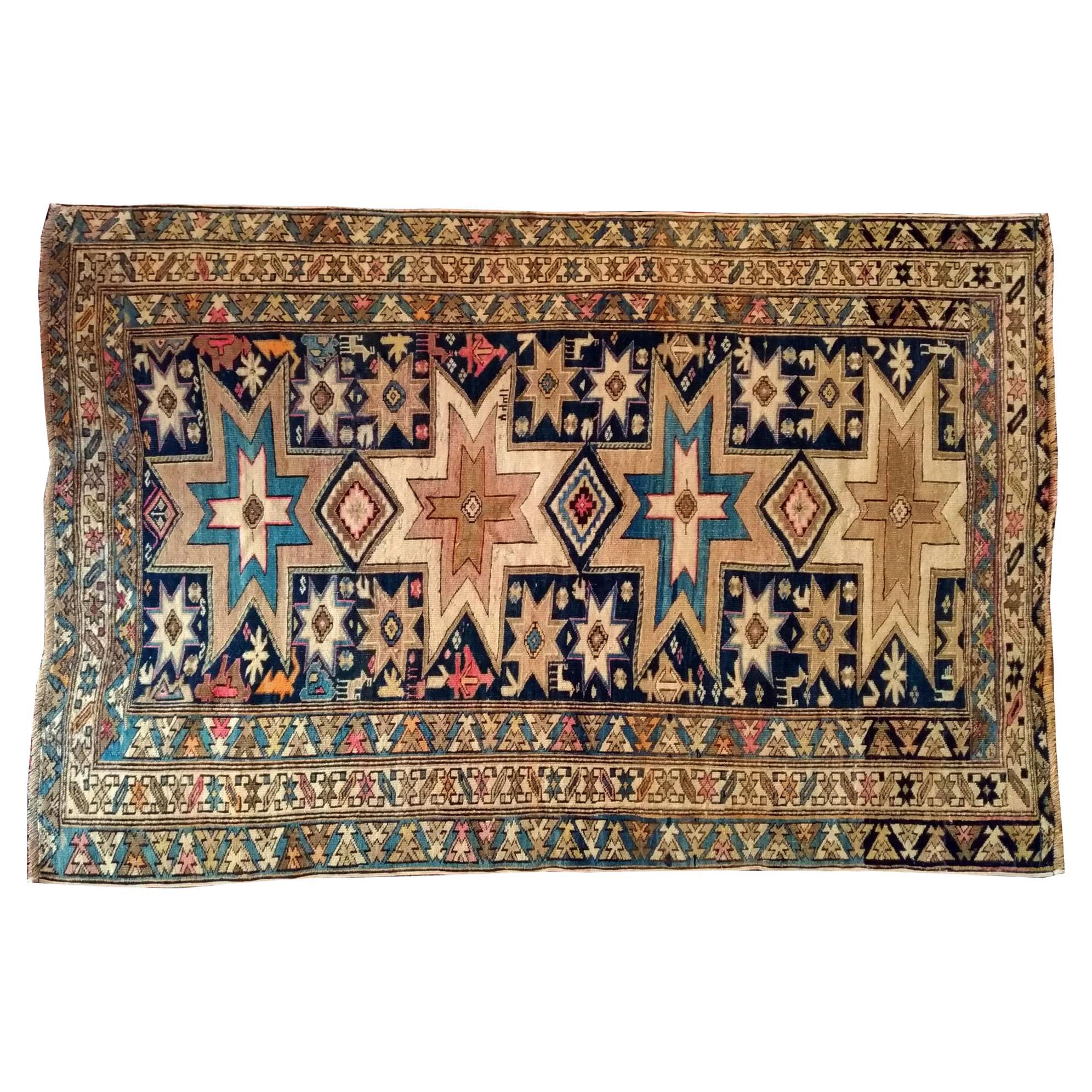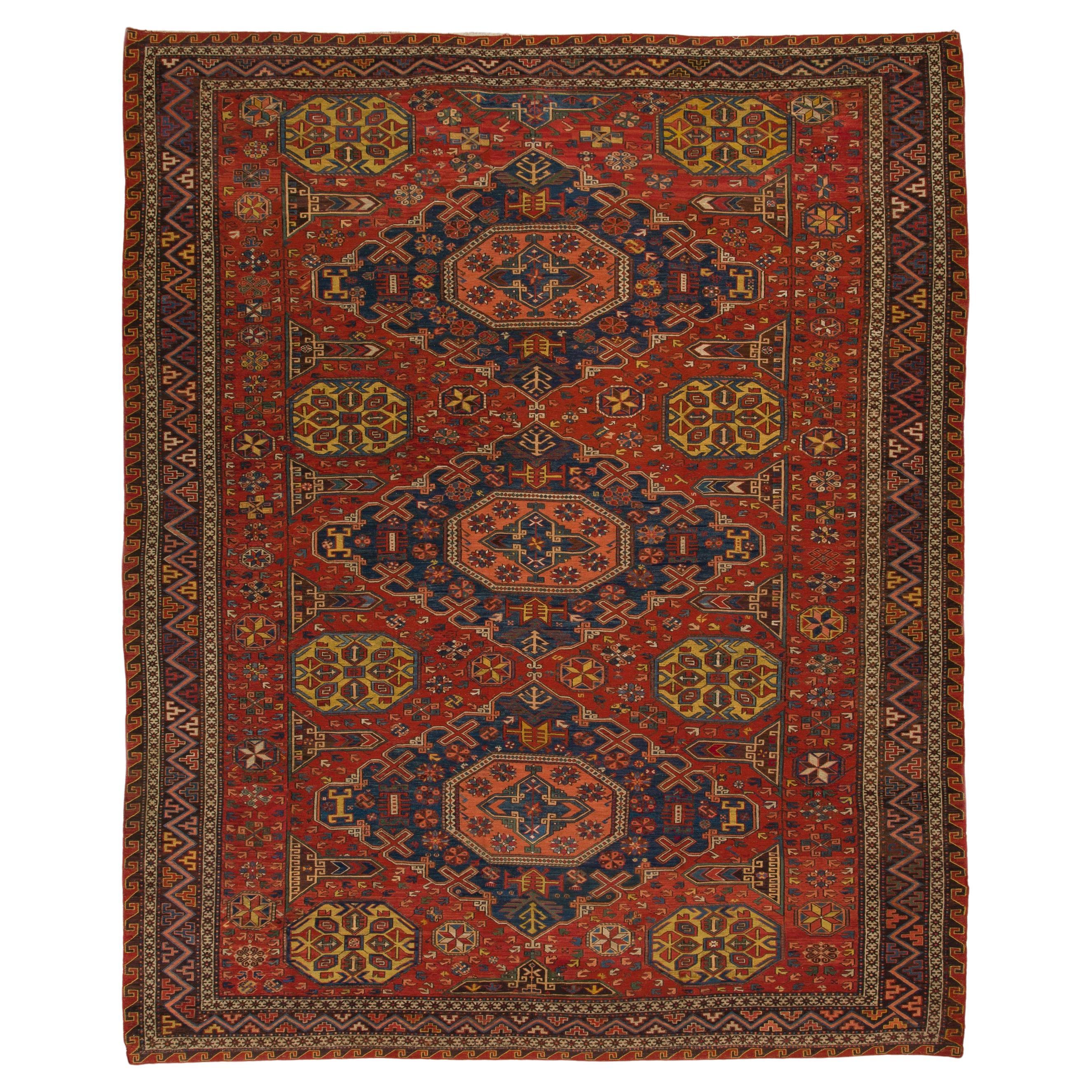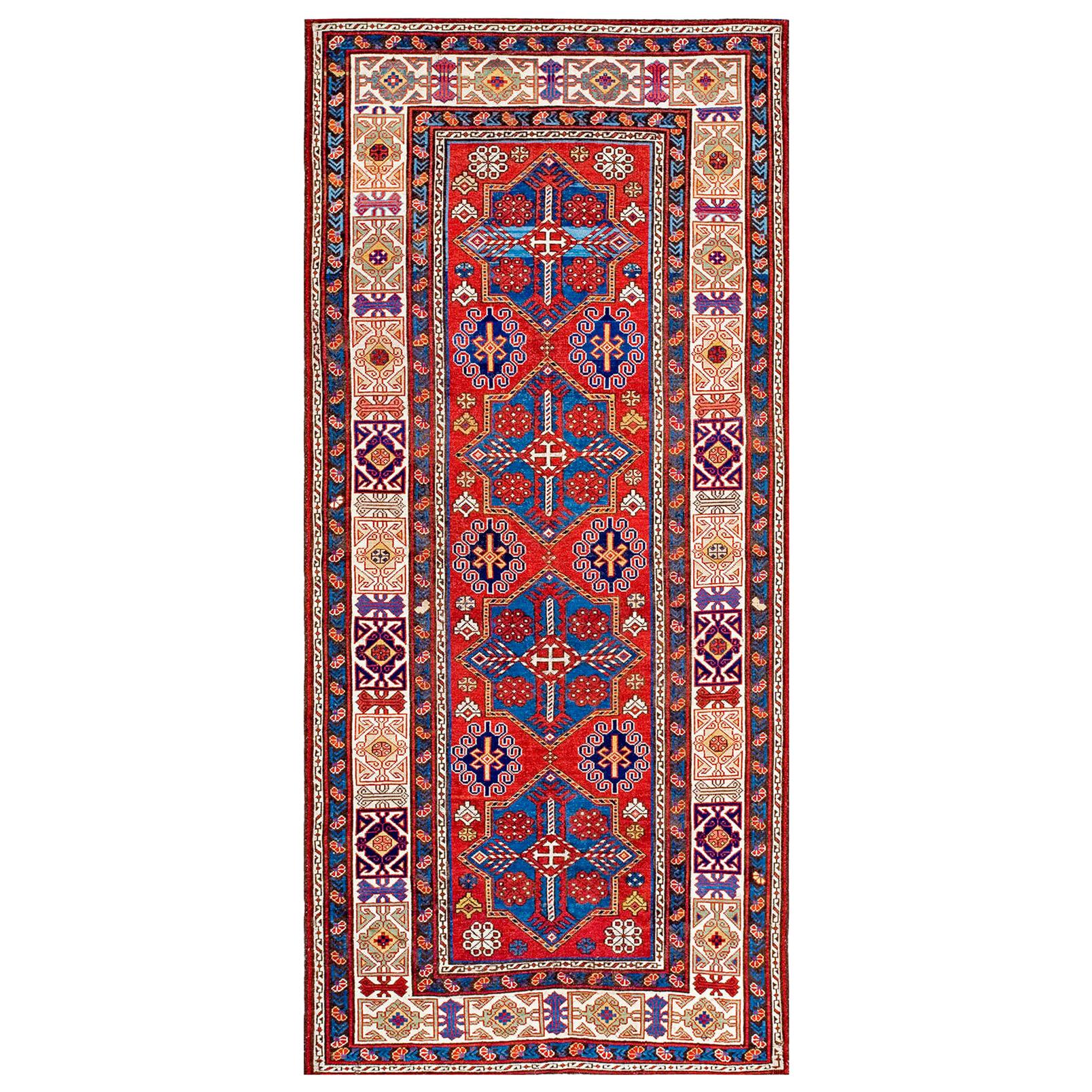Items Similar to 19th Century Caucasian Soumak Carpet ( 5' x 8'3" - 153 x 252 )
Want more images or videos?
Request additional images or videos from the seller
1 of 6
19th Century Caucasian Soumak Carpet ( 5' x 8'3" - 153 x 252 )
About the Item
19th Century Caucasian Soumak Carpet ( 5' x 8'3" - 153 x 252 )
- Dimensions:Width: 60 in (152.4 cm)Length: 99 in (251.46 cm)
- Materials and Techniques:Wool,Hand-Knotted
- Place of Origin:
- Period:1900-1909
- Date of Manufacture:1900
- Condition:Repaired. Rewoven.
- Seller Location:New York, NY
- Reference Number:
About the Seller
4.8
Platinum Seller
These expertly vetted sellers are 1stDibs' most experienced sellers and are rated highest by our customers.
Established in 1995
1stDibs seller since 2019
350 sales on 1stDibs
Typical response time: <1 hour
- ShippingRetrieving quote...Ships From: New York, NY
- Return PolicyA return for this item may be initiated within 3 days of delivery.
More From This SellerView All
- Late 19th Century Caucasian Soumak Flat-weave Carpet (7'6'' x 9 - 228 x 274 cm)Located in New York, NYLate 19th Century Caucasian Soumak Flat-weave Carpet (7'6'' x 9 - 228 x 274 cm)Category
Antique 1880s Caucasian Sumak Caucasian Rugs
MaterialsWool
- 19th Century Caucasian Soumak Carpet with Harshang Design (4'10"x6'4" - 147x193)Located in New York, NY19th Century Caucasian Soumak Carpet with Harshang Design (4'10"x6'4" - 147x193)Category
Antique Late 19th Century Caucasian Sumak Caucasian Rugs
MaterialsWool
- 19th Century Caucasian Kuba Carpet ( 4' x 9' - 122 x 274 )Located in New York, NY19th Century Caucasian Kuba Carpet ( 4' x 9' - 122 x 274 )Category
Antique 1890s Caucasian Kazak Caucasian Rugs
MaterialsWool
- Antique Early 19th Century Caucasian Karabagh CarpetLocated in New York, NYAntique Early 19th Century Caucasian Karabagh Carpet, Size: 6'x 12'Category
Antique 1820s Caucasian Caucasian Rugs
MaterialsWool
- 19th Century S. Caucasian Carpet ( 3'6'' x 8'9'' - 107 x 267 )Located in New York, NY19th Century S. Caucasian Carpet ( 3'6'' x 8'9'' - 107 x 267 )Category
Antique 1880s American Kazak Caucasian Rugs
MaterialsWool
- Late 19th Century S. Caucasian Carpet ( 4' x 9'6" - 122 x 290 )Located in New York, NYLate 19th Century S. Caucasian Carpet ( 4' x 9'6" - 122 x 290 )Category
Antique Early 1900s Caucasian Kazak Caucasian Rugs
MaterialsWool
You May Also Like
- Antique 19th Century Caucasian Verneh Sileh Soumak Wool RugLocated in Norwalk, CTBeautiful antique Caucasian Verneh Sileh Soumak fragment rug, hand knotted wool with a rust field, blue, ivory and orange accents in a multi medallion geo...Category
Antique 19th Century Caucasian Rugs
MaterialsWool
- 1059, Caucasian Shirvan Carpet 19th CenturyLocated in Paris, FRNice 19th century shirwan rug with a beautiful pattern and pretty natural colors, entirely hand-knotted with wool pile on a wool base.Category
Antique 1880s Azerbaijani Tribal Caucasian Rugs
MaterialsWool
- 7' x 9' Antique Caucasian Konaghend Soumak Rug with Tri-Medallions, 19th CenturyLocated in Philadelphia, PAA fascinating antique Caucasian Soumak rug from the 19th century, hand-woven with the special technique of 'Soumak', which is a tapestry technique of weaving strong and decorative t...Category
Antique 19th Century Turkish Sumak Caucasian Rugs
MaterialsWool
- Antique Caucasus Soumak Kilim Rug, Caucasian CarpetLocated in Tokyo, JPThis is a large Antique Soumak ( Sumak, Sumac ) Kilim from the Caucasus region with a rare and beautiful color composition. Of the four countries that make up the Caucasus, Azerbaijan produces the most kilims, and the land has a long history of weaving. The nomadic tribes wove kilims and carpets as well as a wide range of storage bags and sacks, such as saffrash, khurgin and chula, and donkey and horse trappings. Smaller bags for salt, utensils, and other items are also common. Not only are the Azerbaijani weavers prolific, but they also employ many techniques at the loom. These include slitweave- known locally by the word kilim, warp-faced patterning (jajim), supplementary weft (zili), weft wrapping (popularly known as soumak), and extra weft wrapping (verneh). Furthermore, flatweaves are defined by regional names such as palas and shadda, so it is possible to ascribe a variety of weaving names to particular provenances as follows: soumaks are made in Kuba, palas, and kilims in Hajikabul, zili in Khizy, verneh and zili in Kazakh, shadda, verneh and zili in Barda, jajim in Agjabedi, and palas and kilims in Jabrail. Soumak weave is a technique in which new weft threads are added to a plain weave fabric, and one or two warp threads are wound from the front to the back. The resulting kilim is denser and firmer, giving it a unique feel and look. This technique is commonly used in the Caucasus region. Soumak Kilims have a very beautiful contrast between orange that shines like the sun, deep purple-tinged indigo, and astringent dark red. You can also see the unevenly dyed abrage in this sumac, which is like a magic carpet with an oriental atmosphere. Features of the Caucasian kilim, such as the unique cosmic geometric floral pattern, are also found in this Soumak. It has a bright look, but it also has a faded and textured feel, so it can be used in a good old atmosphere. The woven fabric is particularly solid, so it is recommended for use in a solid living room or under a dining table without moving or twisting. A nice kilim under a long wooden dining table.Category
Early 20th Century Caucasian Kilim Caucasian Rugs
MaterialsWool, Natural Fiber
- Antique Caucasus Soumak Kilim Rug, Caucasian CarpetLocated in Tokyo, JPThis is an Antique Soumak ( Sumak, Sumac ) Kilim from the Caucasus region with a rare and beautiful color composition. Of the four countries that make up the Caucasus, Azerbaijan produces the most kilims, and the land has a long history of weaving. The nomadic tribes wove kilims and carpets as well as a wide range of storage bags and sacks, such as saffrash, khurgin and chula, and donkey and horse trappings. Smaller bags for salt, utensils, and other items are also common. Not only are the Azerbaijani weavers prolific, but they also employ many techniques at the loom. These include slitweave- known locally by the word Kilim, warp-faced patterning (jajim), supplementary weft (zili), weft wrapping (popularly known as soumak), and extra weft wrapping (verneh). Furthermore, flatweaves are defined by regional names such as palas and shadda, so it is possible to ascribe a variety of weaving names to particular provenances as follows: soumaks are made in Kuba, palas, and kilims in Hajikabul, zili in Khizy, verneh and zili in Kazakh, shadda, verneh and zili in Barda, jajim in Agjabedi, and palas and kilims in Jabrail. Soumak weave is a technique in which weft threads are added to a plain weave fabric, and one or two warp threads are wound from the front to the back. The resulting Kilim is denser and firmer, giving it a unique feel and look. This technique is commonly used in the Caucasus region. Soumak kilims have a very beautiful contrast between orange that shines like the sun, deep purple-tinged indigo, and astringent dark red. You can also see the unevenly dyed abrage in this Soumak, which is like a magic carpet with an oriental atmosphere. Features of the Caucasian Kilim, such as the unique cosmic geometric floral pattern, are also found in this Soumak which has a bright look, but it also has a faded and textured feel, so it can be used in a good old atmosphere. The woven fabric is particularly solid, so it is recommended for use in a solid living room or under a dining table without moving or twisting. A nice Kilim under a long wooden dining table.Category
Antique Late 19th Century Caucasian Kilim Caucasian Rugs
MaterialsWool, Natural Fiber
- Late 19th C Antique Caucasian Red Blue Gold Tribal Soumak RugLocated in New York, NYSoumak is a tapestry technique of weaving strong and decorative textiles used as rugs and domestic bags. It is a type of flat-weave, somewhat resembling but stronger and thicker than...Category
Antique 1880s Caucasian Sumak Caucasian Rugs
MaterialsWool
Recently Viewed
View AllMore Ways To Browse
Soumak Carpet
Caucasian Soumak
Caucasian Soumak Rugs
Caucasian Soumak Rug
Antique Soumak
Caucasian Antique Soumak
Antique Soumak Rug
Antique Soumak Rugs
Antique Kazak Rug Rugs And Carpets
Antique Kazak Carpets
Antique Caucasian Rug Blue
Antique Caucasian Kazak
Antique Caucasian Tribal Rugs
Antique Caucasian Kazak Rugs
Caucasian Rug Medallion
Caucasian Carpet Medallion
Antique Caucasian Kazak Rug
Antique Caucasian Kazak Rug Rugs And Carpets





